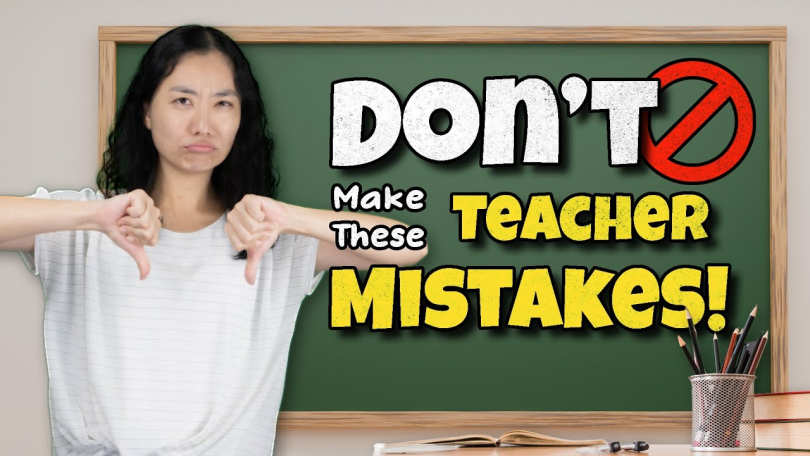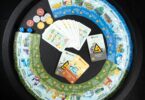Ever feel like you’re speaking and no one’s hearing you? You’ve planned the lesson, printed the flashcards, maybe even practiced a few new songs. But once the class starts, it all goes sideways.
Some students are staring at the ceiling. One is crying because they didn’t understand the instructions. And two more are arguing over who gets the red marker. You glance at the clock. Five minutes in.
Teaching English to young learners can be incredibly rewarding, but also wildly frustrating when things don’t go as planned. It’s not because you’re doing everything wrong. In fact, sometimes it’s just a few common habits that need tweaking.
Let’s take a look at the top mistakes teachers make when working with young ESL students, along with some ideas that can help things run smoother. If your goal is to have a class that’s more focused, more engaged, and (let’s be honest) a little less chaotic, you’re in the right place.
Skipping the Routine
Young kids need structure to feel comfortable. It helps them know what’s coming next, and that predictability makes it easier for them to focus.
One mistake teachers make is trying to keep things “fresh” by changing up the routine every day. The result? Confused students who spend more energy figuring out what’s happening than actually learning.
Research supports this. According to a 2022 study, elementary students in classrooms with consistent routines showed 23% higher engagement and 30% fewer behavioral disruptions than those in less structured environments.
Simple routines, like starting class with a song, then doing a warm-up, a main activity, and a closing game, give students a rhythm they can rely on. You don’t need to be strict about it, but keeping the same basic flow from lesson to lesson helps a lot.
Speaking Like They’re Fluent
It’s easy to forget that just because your students nod when you speak doesn’t mean they’ve understood what you said. Young learners will often try to follow along based on tone and gestures, but inside, they might still be lost.
Try breaking down your language. Instead of “Let’s all take a look at the sentences and decide which ones are correct,” go with: “Look. Read. Good or not good?”
Use short sentences. Say them slowly. And show what you mean whenever you can. Point. Demonstrate. Repeat.
Too Many Worksheets, Not Enough Interaction
Worksheets feel safe. They’re quiet. They keep everyone seated. But young learners don’t absorb language well by sitting silently and circling answers. They need movement, repetition, play, and hands-on learning. If the lesson is built around a worksheet, attention spans start to drift fast.
Try using songs, matching games, card-based activities, or short skits. If you do use a worksheet, follow it up with something active. For example, if the worksheet was about colors, turn it into a classroom scavenger hunt—“Find something red!”
Having a go-to set of interactive lesson ideas can balance your planning and keep kids more involved. One way to do this is by relying on good ESL curriculum resources designed with young learners in mind, which offer prompts, visuals, and hands-on activities, so you aren’t left searching for ideas at the last minute.
A little variety goes a long way. When you bring in more movement and engagement, learning doesn’t just happen, it sticks.
Overlooking Cultural Differences
Sometimes we forget that what’s normal to us might be completely unfamiliar to our students.
Things like birthday traditions, holiday foods, school routines, and even basic manners can look very different across cultures. If students seem confused, it might not be about language. It could just be that the context doesn’t make sense to them.
Try to be aware of this when choosing stories, games, and examples. Use visuals to explain things, and check in to make sure the students understand what something means, not just how to say it.
You can also invite students to share examples from their own culture. It gives them a chance to contribute, and the class learns something new together.
Wanting Quick Results
You’ve probably had this moment: you explain a word, go over it again, build an activity around it, and then… nothing. They stare at you blankly the next day.
It’s normal to feel discouraged, but language learning at this age is more about long-term exposure than instant mastery. Kids may not use a word right away, but that doesn’t mean it isn’t sinking in.
Studies show that young children often need 6 to 12 exposures to a new word in meaningful contexts before they begin to use it themselves. And even then, productive use may lag behind comprehension by weeks or even months.
The key is consistency and repetition. Celebrate small progress, like when they respond with a word instead of silence or remember a song lyric. That’s growth, even if it’s slow.
Not Having a Clear Plan for Behavior
Even the best-planned lesson can fall apart if there’s no strategy for behavior. Young learners, especially in a second-language classroom, need really clear expectations. Not long explanations. Just a few rules they can remember.
Positive reinforcement works best. Think stickers, points, or just a high five when they follow instructions. Avoid shouting or showing frustration. Calm, consistent responses go a long way.
Teaching Vocabulary Without Real Use
Teaching ten new words in a row might seem efficient, but without context, it’s hard for young learners to remember what any of them mean.
Instead of drilling through a list, try introducing words as part of a theme. For example, if you’re teaching food, make a pretend menu, act out restaurant scenes, or read a short story about lunch.
The more kids use the words in a sentence, a game, or a conversation, the better they remember them. Repetition helps, but meaningful use makes it stick.
Bringing It All Together
Teaching ESL to young kids takes a little patience and a lot of creativity. When you slow down, stick to routines, use visuals, and keep the classroom active, everything works better not just for the students, but for you too.
Avoiding these common mistakes doesn’t require a full overhaul. Just small changes here and there. A clearer explanation. A more predictable class flow. A lesson with a little more movement or imagination. And when you need support, remember that there are great tools and resources out there designed to make this job a little easier and a lot more fun.
At the end of the day, young learners won’t remember every worksheet or word list. But they will remember the classroom where they felt safe, encouraged, and excited to try. That’s what makes the difference.







